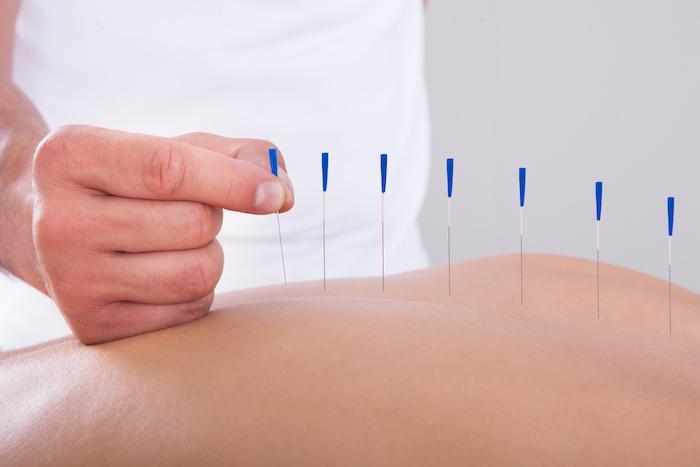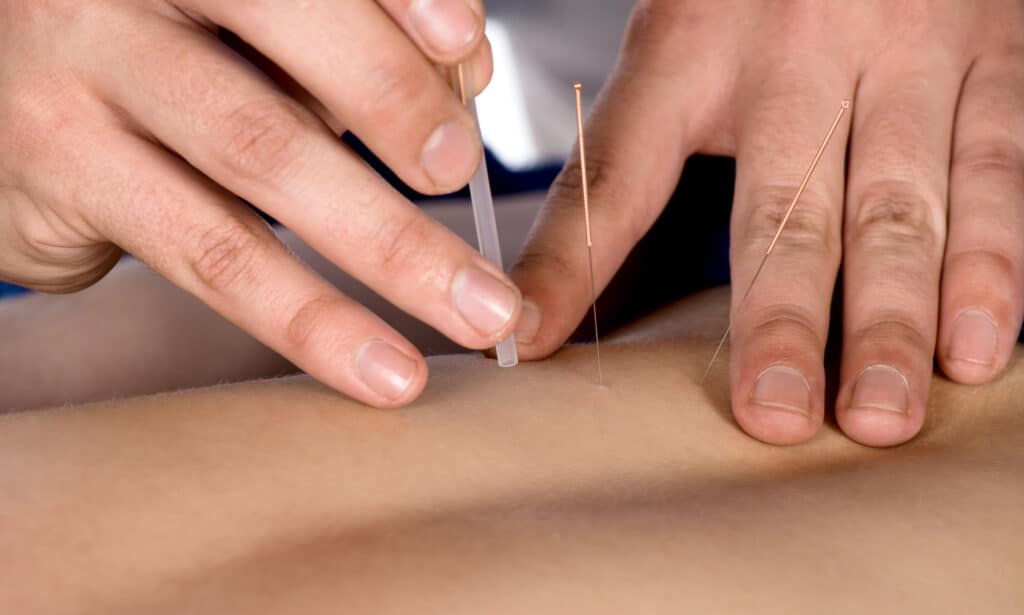Enhancing Healing With Integrative Dry Needling
Safety and Best Practices in Dry Needling
Integrative Dry Needling is a therapeutic technique gaining significant traction in healthcare. This method involves using fine, sterile needles to target trigger points and muscle knots in the body. It’s not only effective at reducing pain but also promoting overall healing. In recent years, Integrative Dry Needling has increased as more people seek alternative and complementary therapies to enhance their well-being. This blog delves into Integrative Dry Needling to shed light on how this practice can significantly contribute to the healing process. Discover the science, techniques, and real-life stories of those who have found relief and recovery through Integrative Dry Needling.
Understanding Integrative Dry Needling
Integrative Dry Needling is a specialized technique within the broader practice of dry needling. Unlike traditional dry needling, which primarily targets muscular trigger points, Integrative Dry Needling takes a more comprehensive approach. It combines the principles of traditional dry needling with elements from various healthcare disciplines, addressing not only muscular issues but also considering the holistic well-being of the patient. This multifaceted approach makes Integrative Dry Needling an attractive choice for individuals seeking an integrative and whole-body healing experience. This blog will explore the core principles and the science underpinning this unique and practical therapeutic approach.
Conditions Treated with Integrative Dry Needling
Integrative Dry Needling is a versatile therapeutic technique that can address many health conditions, offering hope and relief. By targeting trigger points, muscular knots, and the nervous system, this holistic approach to healing is proving effective in managing and alleviating various ailments—the diverse spectrum of conditions that can benefit from Integrative Dry Needling.
- Pain Management and Relief: Pain management is one of the primary applications of Integrative Dry Needling. Whether it’s chronic pain from conditions like fibromyalgia, arthritis, or acute pain from injuries, needling can provide significant relief. Releasing tension and improving blood flow can help reduce pain and promote healing.
- Sports Injuries and Performance Enhancement: Athletes often turn to Integrative Dry Needling to recover from injuries and enhance their performance. The technique can aid in healing muscle strains, ligament injuries, and other sports-related issues. Moreover, it can improve flexibility and muscle function, contributing to overall athletic performance.
- Rehabilitation After Surgeries: Following surgeries, patients may experience stiffness, muscle weakness, and discomfort. Integrative Dry Needling can play a vital role in post-surgical rehabilitation by addressing these issues and accelerating the healing process.
- Neurological Disorders: Neurological conditions, such as sciatica and neuropathy, can result in chronic pain and impaired function. Integrative Dry Needling can help manage these symptoms by targeting trigger points and relaxing muscles, relieving individuals with neurological disorders.
- Psychological Benefits of Integrative Dry Needling: The benefits of Integrative Dry Needling extend beyond the physical realm. Many patients report experiencing a sense of relaxation, stress reduction, and improved sleep patterns after treatment. These psychological benefits are precious in today’s high-stress world.
It’s important to note that while Integrative Dry Needling can be effective for a wide array of conditions, it is not a one-size-fits-all solution. Individualized treatment plans, created in collaboration with a qualified practitioner, are essential to address specific needs and achieve optimal results.
Integrative Dry Needling Techniques
Integrative Dry Needling is a therapeutic approach that combines the precision of dry needling with principles from various healthcare disciplines. This unique blend of techniques makes it a powerful tool for addressing various health issues. The core techniques used in Integrative Dry Needling help you better understand how this holistic approach to healing works.
- The Needling Process: At the heart of Integrative Dry Needling is inserting fine, sterile needles into specific points on the body known as trigger points or myofascial knots. These needles are incredibly thin, and their insertion is generally not painful. Once the needle is in place, it triggers a series of responses in the body that promote healing.
- Combining Dry Needling with Complementary Therapies: Integrative Dry Needling integrates elements from other healthcare disciplines. This can include combining needling with physical therapy, massage, or acupuncture. These complementary therapies work in synergy to enhance the overall effectiveness of the treatment.
- Patient Assessment and Individualized Treatment Plans: Each patient’s condition is unique, which is why Integrative Dry Needling emphasizes the importance of a thorough initial assessment. Practitioners will evaluate the patient’s needs, medical history, and symptoms. Based on this assessment, a personalized treatment plan is developed to address the individual’s unique health issues.
- Trigger Point Identification: One of the critical skills of a trained Integrative dry-needling practitioner is the ability to identify trigger points accurately. This skill allows them to target the exact locations that require treatment. It’s not just about inserting needles randomly; it’s about precise and intentional therapy.
- Holistic Approach: Integrative Dry Needling views the body as a complex system where various aspects of health are interconnected. This holistic approach means that treatment considers not only the physical aspect but also the emotional and mental well-being of the patient. It’s about treating the whole person.
- Patient Involvement: Patients actively participate in their healing journey through Integrative Dry Needling. They are encouraged to communicate openly with their practitioner, providing feedback on their progress and comfort during the treatment. This collaborative approach ensures that the therapy remains patient-centered and effective.
Safety and Risks in Integrative Dry Needling
Integrative Dry Needling is a therapeutic technique that has shown promise in treating various health issues. Still, like any medical procedure, it comes with safety considerations and potential risks—the critical aspects to provide a well-rounded understanding of Integrative Dry Needling.
Safety First
First and foremost, safety is a top priority in Integrative Dry Needling. Practitioners are typically required to undergo comprehensive training to ensure they possess the necessary knowledge and skills to perform the procedure safely. In many regions, there are strict regulations in place governing the practice of Integrative Dry Needling.
Potential Side Effects and Complications
While Integrative Dry Needling is generally considered safe by trained professionals, some individuals may experience side effects. These can include:
- Soreness: It’s common to feel muscle soreness in the treated areas immediately after the procedure, but this typically subsides within a day or two.
- Bruising: Minor bruising at the needle insertion sites can occur but is usually mild and temporary.
- Fatigue: Some patients may experience temporary fatigue after a session, likely due to the release of endorphins and muscle relaxation.
- Infection: There’s a minimal risk of infection, but it’s extremely rare due to the use of sterile needles.
- Needle Puncture: In very rare instances, a needle may inadvertently puncture underlying structures such as blood vessels or nerves, which could lead to complications.
Qualified Practitioners are Key
One of the best ways to minimize risks associated with Integrative Dry Needling is to ensure that you’re working with a qualified and experienced practitioner. Verify they have the necessary certifications and are licensed to practice in your area. It’s also vital to communicate openly with your practitioner about your medical history, ongoing conditions, or medications you may be taking. This will enable them to tailor the treatment to your needs and minimize potential risks.

Integrative Dry Needling vs. Traditional Healing Methods
A growing interest in alternative and complementary therapies has led to a surge in practices like Integrative Dry Needling in healthcare. This method, which involves the precise insertion of fine needles into trigger points, is gaining popularity for its effectiveness in promoting healing. But how does Integrative Dry Needling compare to traditional healing methods, and in what situations does it shine? Let’s explore this question.
Traditional Healing Methods:
- Medication: One of the primary approaches in traditional medicine is using medication to manage pain and symptoms. While pharmaceuticals can be effective, they often come with side effects and the risk of dependency.
- Physical Therapy: Physical therapy is a widely practiced traditional rehabilitation and pain management method. It involves exercises and manual techniques to improve mobility and function.
- Surgery: In some cases, traditional medicine may opt for surgical interventions to correct or alleviate specific health issues. Surgery can be effective but carries risks and a more extended recovery period.
- Rest and Ice: Resting and applying ice or heat are common recommendations for injury recovery, but they may not be sufficient for chronic conditions.
- Massage and Acupuncture: These traditional methods focus on relaxation, improved circulation, and balancing energy within the body. They can be effective for specific conditions but may need to address trigger points more precisely as Integrative Dry Needling.
Integrative Dry Needling:
- Targeted Treatment: Integrative Dry Needling specifically targets trigger points and muscle knots in the body. This precision can lead to faster pain relief and recovery for many conditions.
- Natural Healing: Integrative Dry Needling stimulates the body’s natural healing mechanisms by improving blood flow, releasing endorphins, and reducing muscle tension. This aligns with the growing interest in holistic health.
- Minimal Side Effects: When performed by a qualified practitioner, Integrative Dry Needling typically has fewer side effects and complications than surgery or medication.
- Complementary Approach: Integrative Dry Needling can be used in conjunction with traditional methods. It often works well in a comprehensive treatment plan addressing the root cause and symptoms.
The Role of Integrative Dry Needling
Integrative Dry Needling is a practical and complementary approach to traditional healing methods. It is especially beneficial for addressing musculoskeletal issues, managing pain, and promoting natural healing. Its minimal invasiveness and reduced side effects make it an attractive option for many patients.
In conclusion, Traditional medical treatments sometimes fail to address complex health issues, leaving patients with limited options and prolonged discomfort. Medications and surgeries come with potential side effects and lengthy recovery periods.
Moreover, the rising opioid epidemic highlights the need for alternative pain management solutions. Patients are searching for treatments that alleviate pain, promote natural healing, reduce reliance on pharmaceuticals, and offer fewer side effects.
Enter Integrative Dry Needling, a versatile and precise technique that addresses a range of conditions with minimal risks and promising results. Explore Integrative Dry Needling today for a holistic and efficient path to recovery.
Contact us or visit our website to discover how Integrative Dry Needling can enhance your healing journey and improve your quality of life. Don’t let pain and discomfort hold you back; take the first step towards a healthier you.




